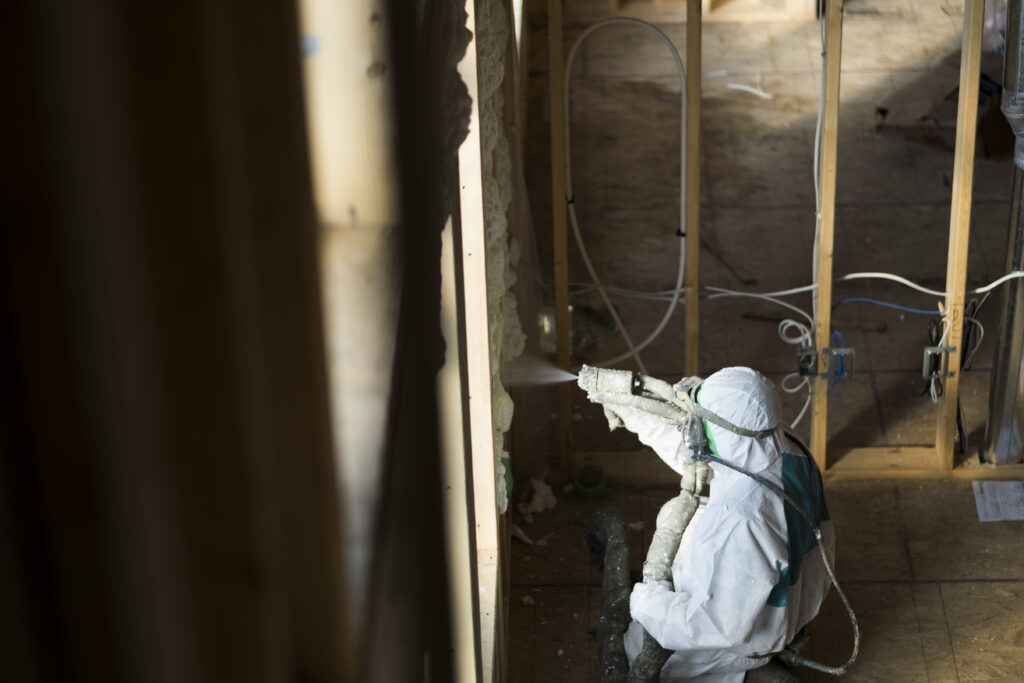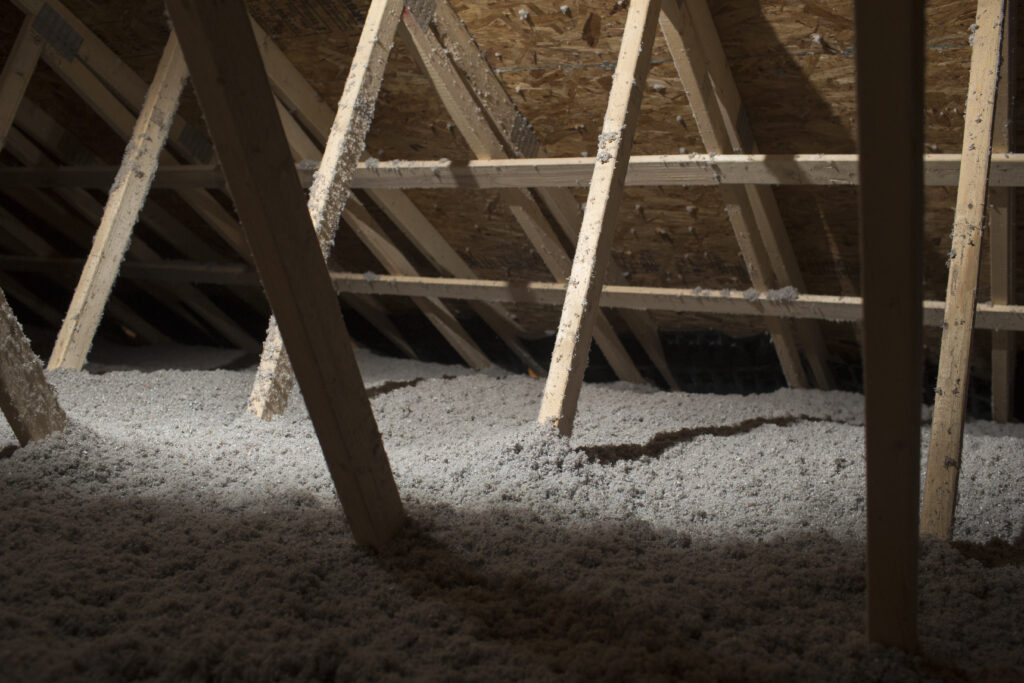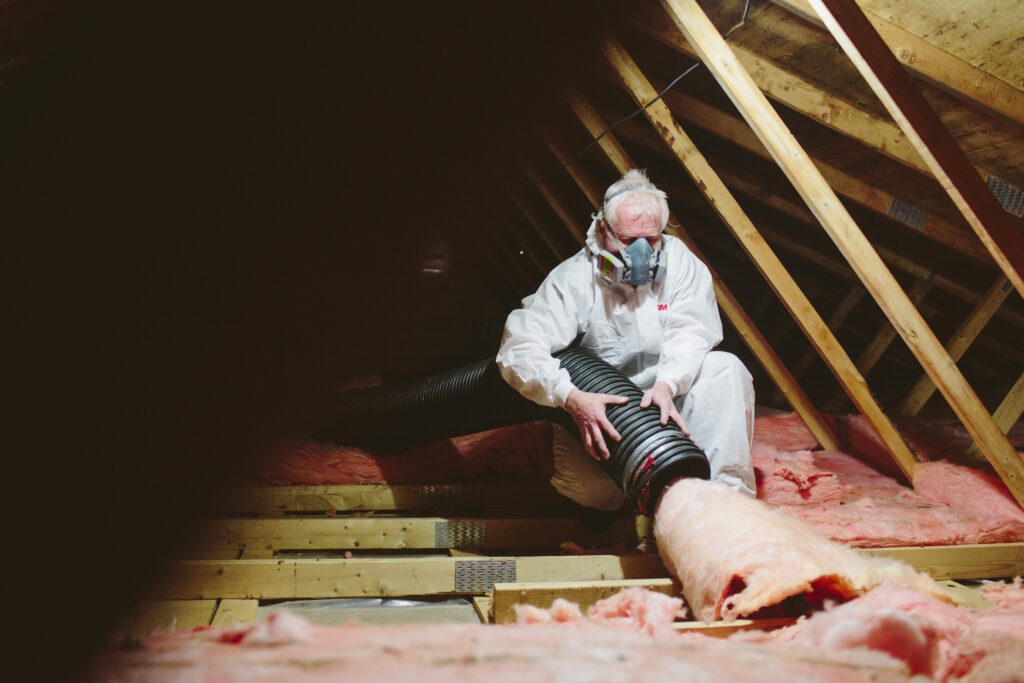Spray Foam
Little air leaks can add up to big energy costs, and SOPREMA Spray Foam can fill in those small air leak areas as it expands. Spray foam is applied by spraying two compounds together that react, creating a foam that expands to fill every gap and prevents warm air from escaping. Spray foam also helps to muffle sounds and repel moisture.
Spray Foam
Little air leaks can add up to big energy costs, and SOPREMA Spray Foam can fill in those small air leak areas as it expands. Spray foam is applied by spraying two compounds together that react, creating a foam that expands to fill every gap and prevents warm air from escaping. Spray foam also helps to muffle sounds and repel moisture.

Cellulose
Perfect for attics and walls, cellulose insulation (also referred to as blown-in insulation) is a low-thermal-conductivity material, helping minimize drafts and heat loss in your home.
Blown in between the walls, this type of insulation prevents humid air from leaking into your attic from the floors below, saving your roof from the damaging effects of moisture and preventing rot.

Cellulose
Perfect for attics and walls, cellulose insulation (also referred to as blown-in insulation) is a low-thermal-conductivity material, helping minimize drafts and heat loss in your home.
Blown in between the walls, this type of insulation prevents humid air from leaking into your attic from the floors below, saving your roof from the damaging effects of moisture and preventing rot.
Rigid Foam
Rigid Foam Board insulation is installed underneath the siding of your home and completely envelopes the wall assemblies inside.
Rigid Foam Board insulation come in 3 options:
- Expanded polystyrene – Lowest level R value per inch. Commonly used in basements and crawl spaces or where vapour barrier isn’t warranted.
- Extruded polystyrene – Middle level R value per inch. Commonly used on exterior applications where a vapour barrier is needed.
- Polyisocyanurate – Highest level R value per inch. Commonly used on exterior applications where a more resistant vapour barrier is needed.
Rigid Foam
Rigid Foam Board insulation is installed underneath the siding of your home and completely envelopes the wall assemblies inside.
Rigid Foam Board insulation come in 3 options:
- Expanded polystyrene – Lowest level R value per inch. Commonly used in basements and crawl spaces or where vapour barrier isn’t warranted.
- Extruded polystyrene – Middle level R value per inch. Commonly used on exterior applications where a vapour barrier is needed.
- Polyisocyanurate – Highest level R value per inch. Commonly used on exterior applications where a more resistant vapour barrier is needed.
Insulation Removal

Insulation Removal
MJM Energy and Alstar Insulators offer cellulose and fiberglass insulation removal services.
What to expect from us
We work closely with our partners at Sustainable Housing to determine which home upgrades will be the most effective for your home. Having your home properly assessed is a crucial step in making sure the most impactful home renovations are done to keep the heat in your home and reduce your home heating bills.
MJM Energy and Alstar Insulators are certified SOPREMA installers. You can be confident that not only will the install go smoothly, but the results will exceed your expectations when it comes to increasing your home’s overall R value.

